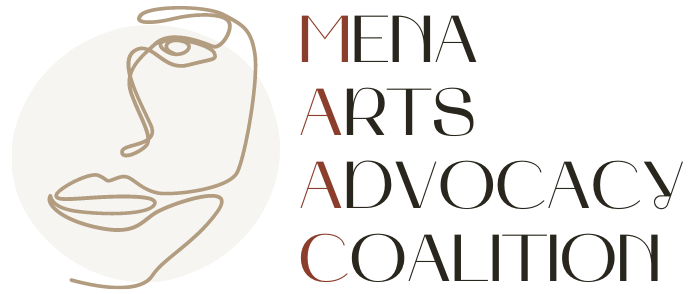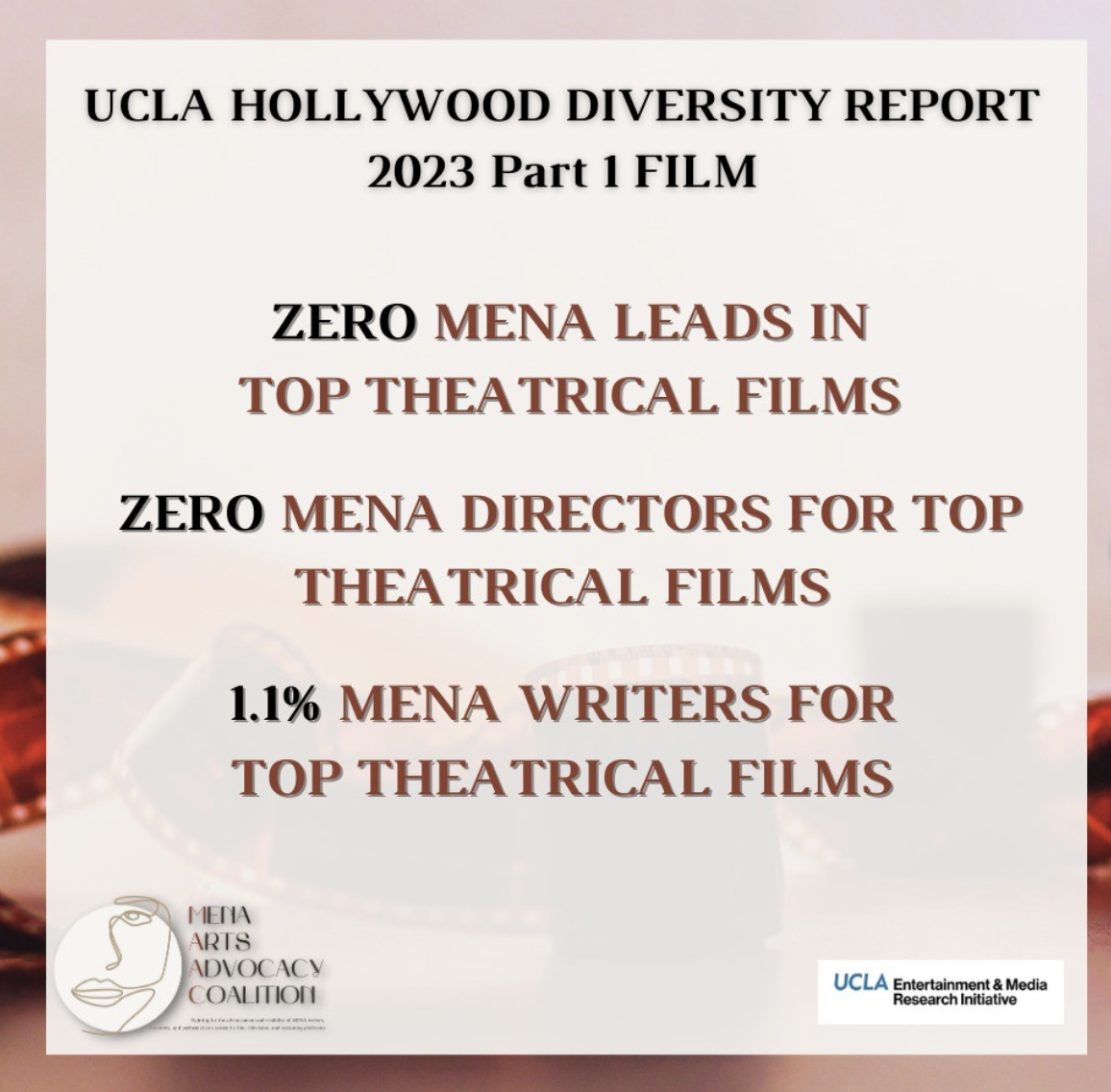
MAAC's presentation of the 1st ever MENA study created a ripple effect in Hollywood, calling attention to the negative stereotypes the MENA community faces.
Stereotypes that lead to implicit bias with political and social ramifications. Including MENA in studies is crucial and allows us to present decision-makers with real data to force a dialogue on how to disrupt these dangerous silos.

How Reel Middle Easterners' Portrayals Cultivate Stereotypical Beliefs and Policy Support, Mass Communication and Society
MAAC is presenting a new study with data from 19 years (1996 to 2014), that investigates the long standing impact Middle Eastern, North African (MENA) portrayals in entertainment media has had on Americans’ attitudes and in turn, public policy.

ZER0 MENA
ZER0 MENA
New data drop with a whole lot of gut punching ZEROS for MENA in FILM.
Per @uclacollege new 2023 Hollywood Diversity Report - streamers and studios have to address some serious concerns on MENA representation in film with both on and behind camera MENA talent. Sitting on panels discussing this is not enough. We need our entertainment partners to meet us with measurable change and real goals.
For details please swipe through. Thank you to our partners @uclacollege @anachristinaramon for sitting with us and including our communities in their very important research.

In the Spring of 2020, we sat with UCLA social sciences and asked for MENA performers to finally be counted, measured, and included in their very important Hollywood Diversity Report.
Even though MENA Performers only represented 0.7% on film, we packed a big punch at the Global Box Office.

In 2018 We presented the 1st ever Study on MENA on TV with authors Nancy Wang Yuen, Christina Chin, Meera Deo, Faustina DuCros, Jenny Jong-Hwa Lee .
90% of the time MENA series regulars were tokenized. 78% seen as terrorists, threats. 67% of the time had exaggerated accents …

Per the Writer Guild of America’s 2020 Inclusion Report ….
Middle Eastern writers had “almost no representation at all.” A mere 0.3% of working screen and TV writers identified as Middle Eastern.

2021 New Diverse Intelligence Series Report “Being Seen on Screen: The Importance of Quantity and Quality Representation on TV
This year we’ve begun a new partnership with Nielsen Media to begin measuring MENA on screen. Nielsen data is crucial and works across all media, including news, commentary and advertising. Our first collaboration with their 2021 New Diverse Intelligence Series Report “Being Seen on Screen: The Importance of Quantity and Quality Representation on TV,” is the start to educating Nielsen clients that MENA deserves to be its own Category alongside our Black, Latinx, Asian and Indigenous communities.








